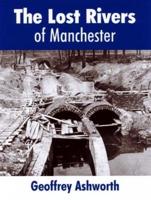Publisher's Synopsis
Wakefield, a county town since the Middle Ages, developed steadily in the nineteenth century as it prospered from the corn trade, its vast cattle-market, and the coal-mining, engineering and textile industries. As the country became more democratic, Wakefield itself became a parliamentary borough in 1832, a municipal borough in 1848 and the seat of the great West Riding County Council in 1889. Its parish church acquired Cathedral status when it became the centre of a new diocese in 1888 and as a consequence Wakefield became a city. Its distinctive skyline was completed with the tower of the Town Hall of 1880 and the dome of the County Hall of 1898. The renowned Trinity rugby football club originated in 1873. At the beginning of the century the inhabitants depended on wells and streams for their water supply and only a few streets were lit (with whale-oil lamps). Good quality mains water from the Corporation?s Ringstone reservoir was turned on in 1888; and electricity, generated from Wakefield?s own power station, came in the 1890s. By 1900, Wakefield had a fine general hospital, a public park and public swimming baths as well as numerous clubs and societies.











